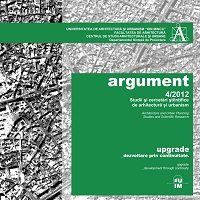CONTINUITATEA ARTEI MOZAICULUI ÎN BISERICILE BIZANTINE
THE CONTINUITY OF THE MOSAIC ART IN THE BYZANTINE CHURCHES
Author(s): Andreea NeacșuSubject(s): Architecture, History of Church(es), Middle Ages, History of Art
Published by: Editura Universitară “Ion Mincu”
Keywords: mosaic art; tradition; churches; Bucharest;
Summary/Abstract: The mosaic art has its roots deep implanted in the history, by the time of the Roman Empire and even before it, where the mosaic was employed in a high way. The mosaic can cover any decorative style, due to the fact that it can bring together any compositional, colored or thematic model. The most beautiful and luxurious mosaics belong to the medieval period, examples being the mosaic from Ravenna, Roma (Vth and VIth century), Palermo (XIIth century) and Constantinopol (VIth to XIIIth century). In Romania, after a few examples of relative small dimensions, realized in the interwar period by artists as Dumitru Norocea or, the most important, Olga Greceanu, in the last years the mosaic art developed very much, a big number of buildings (about fifty) being decorated with mosaic panels, most of them being churches, and a few – public buildings. The first church of our country decorated entirely with mosaic in interior is Saint Mercurios, from Titan parish, Bucharest.
Journal: Argument
- Issue Year: 2012
- Issue No: 4
- Page Range: 379-392
- Page Count: 14
- Language: English, Romanian

